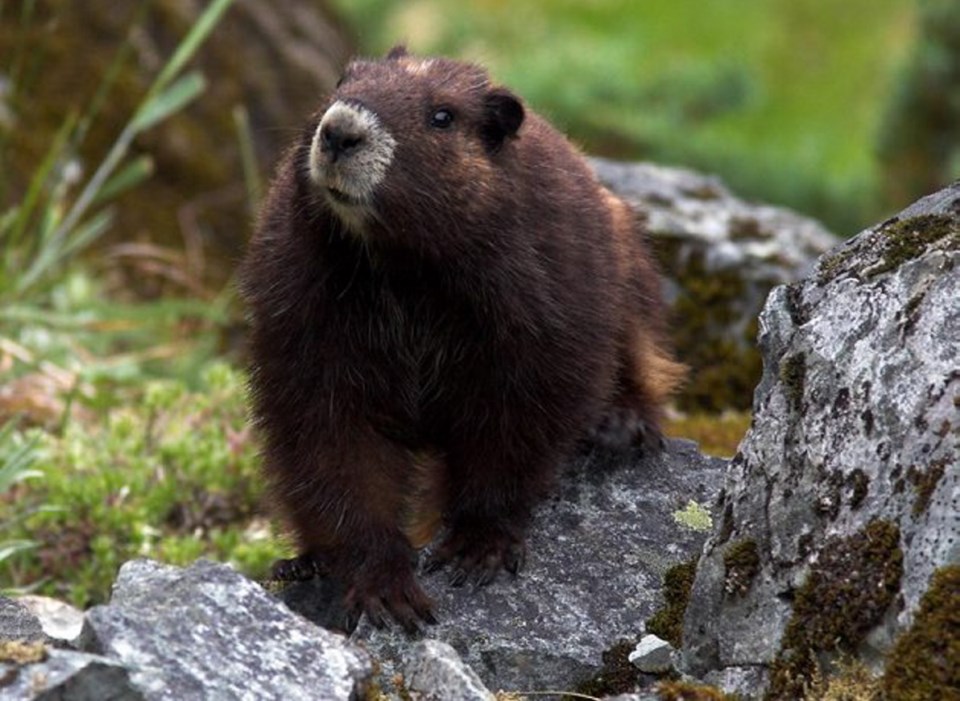Habitat of the endangered Vancouver Island marmot is disappearing as the warming climate allows trees to grow higher up mountainsides, turning alpine meadows into forest.
Adam Taylor, executive director of the Marmot Recovery Foundation, said the Vancouver Island marmot needs the treeless high-altitude meadows to see, avoid and escape predators.
Taylor said as little as 20 years ago, biologists would sit alongside one prominent marmot meadow in the Nanaimo Lakes area and count the animals.
Now that meadow is filled with small trees.
“And where there are trees, marmots simply don’t survive,” he said.
“They get eaten pretty fast.”
The disappearance of alpine meadows is being studied around the province by scientists from the Royal B.C. Museum.
Alpine meadows on Vancouver Island are home to about 200 wild Vancouver Island marmots. Another 50 are in zoos in Calgary and Toronto, part of a captive breeding program raising animals for re-introduction into the wild.
But with climate change, the “creeping treeline” is forcing members of Taylor’s foundation to make changes to marmot recovery plans.
Biologists are removing small trees growing in marmot meadows. They are also establishing new colonies in Strathcona Park where the habitat change appears to be occurring in a less drastic fashion.
Taylor said the alpine meadows of the Nanaimo Lakes area are on mountaintops being taken over by trees. “They are like these islands of marmot habitat that are being swallowed up by this sea of trees.”
But alpine habitat in Strathcona Park seems to occur in broader bands across the sides of its mountains. It’s hoped as the treeline creeps up, so will the marmot meadows.
“We have to cross our fingers and hope it plays out the way we think it will,” Taylor said.
Alpine meadows are also being studied by biologists in Kluane National Park in the southwest corner of the Yukon and an adjacent area in a northwestern corner B.C. in the Atlin area.
Ken Marr, a botanist with the Royal B.C. Museum, said the mountain tree line, the elevation above which trees won’t grow, seems to be linked to temperature. If July doesn’t warm up beyond 10 C, trees don’t grow.
“As the globe warms up, it’s totally predictable, and is documented in some areas, that the treeline will move higher,” Marr said.
He said alpine meadows are home to smaller plants, such as grasses, which might disappear. He and other museum scientists have conducted surveys this summer in the province’s northwest corner. Biologists collect specimens of organisms in habitats on mountain slopes.
Marr said the museum’s role is to build and maintain specimen collections from all regions of the province.
“Are species being lost? Without a baseline, without even knowing what is there now, you can’t draw any conclusions about what is there in the future.”



